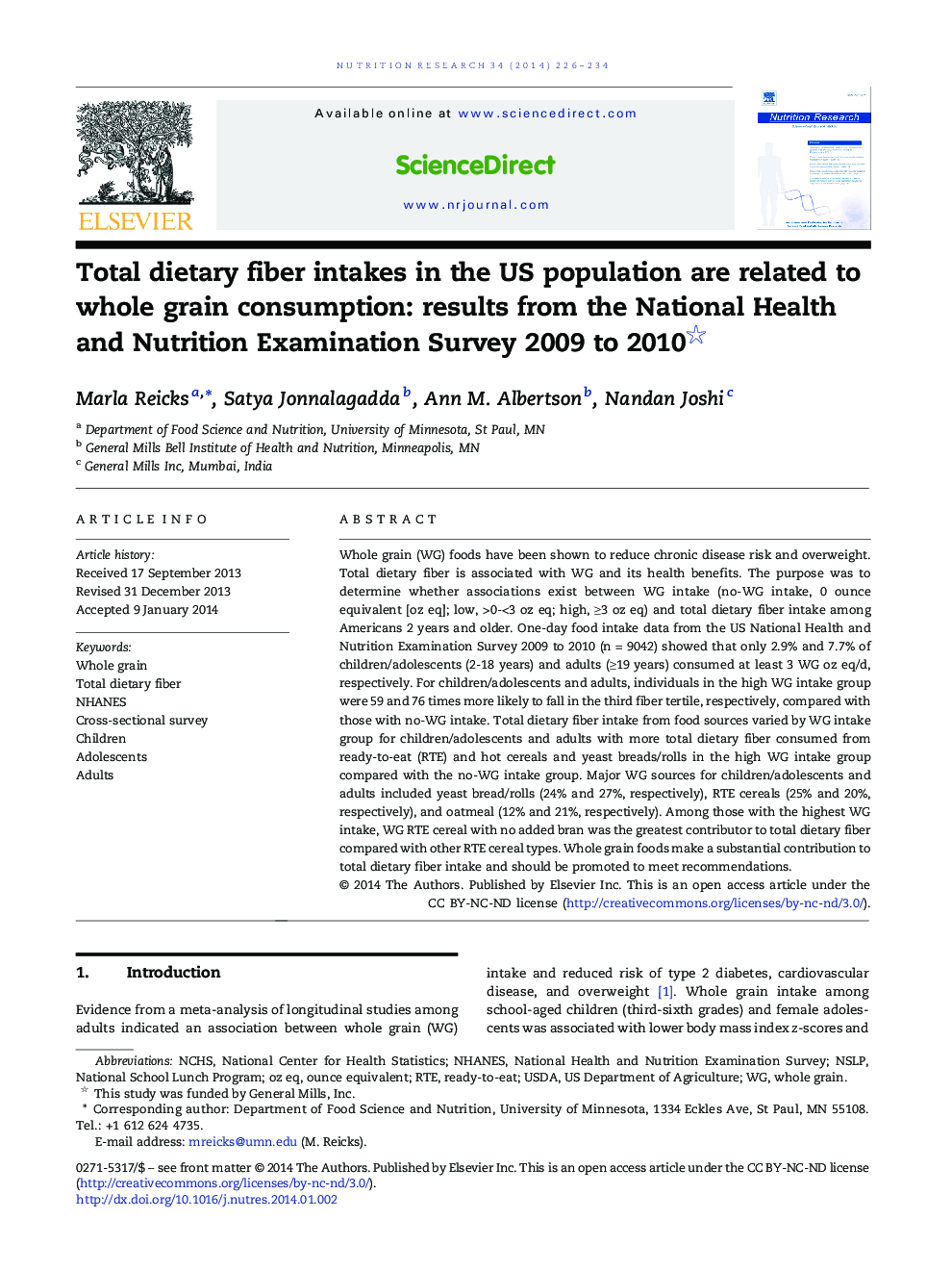| کد مقاله | کد نشریه | سال انتشار | مقاله انگلیسی | نسخه تمام متن |
|---|---|---|---|---|
| 5904451 | 1158000 | 2014 | 9 صفحه PDF | دانلود رایگان |
عنوان انگلیسی مقاله ISI
Total dietary fiber intakes in the US population are related to whole grain consumption: results from the National Health and Nutrition Examination Survey 2009 to 2010
ترجمه فارسی عنوان
مجموع مصرف فیبرهای رژیمی در جمعیت ایالات متحده به مصرف کل دانه مربوط می شود: نتیجه بررسی ملی بهداشت و تغذیه سال های 2009 تا 2010
دانلود مقاله + سفارش ترجمه
دانلود مقاله ISI انگلیسی
رایگان برای ایرانیان
کلمات کلیدی
RTENHANESNCHSUSDAReady-to-eat - آماده به غذا خوردنNational Health and Nutrition Examination Survey - بررسی بهداشت و تغذیه ملیCross-sectional survey - بررسی مقطعیNational School Lunch Program - برنامه ناهار مدرسه ملیAdults - بزرگسالانNational Center for Health Statistics - مرکز ملی آمار بهداشتAdolescents - نوجوانیUS Department of Agriculture - وزارت کشاورزی ایالات متحدهWhole grain - کل دانهTotal dietary fiber - کل فیبر رژیمیChildren - کودکان
موضوعات مرتبط
علوم زیستی و بیوفناوری
بیوشیمی، ژنتیک و زیست شناسی مولکولی
علوم غدد
چکیده انگلیسی
Whole grain (WG) foods have been shown to reduce chronic disease risk and overweight. Total dietary fiber is associated with WG and its health benefits. The purpose was to determine whether associations exist between WG intake (no-WG intake, 0 ounce equivalent [oz eq]; low, >0-<3 oz eq; high, â¥3 oz eq) and total dietary fiber intake among Americans 2 years and older. One-day food intake data from the US National Health and Nutrition Examination Survey 2009 to 2010 (n = 9042) showed that only 2.9% and 7.7% of children/adolescents (2-18 years) and adults (â¥19 years) consumed at least 3 WG oz eq/d, respectively. For children/adolescents and adults, individuals in the high WG intake group were 59 and 76 times more likely to fall in the third fiber tertile, respectively, compared with those with no-WG intake. Total dietary fiber intake from food sources varied by WG intake group for children/adolescents and adults with more total dietary fiber consumed from ready-to-eat (RTE) and hot cereals and yeast breads/rolls in the high WG intake group compared with the no-WG intake group. Major WG sources for children/adolescents and adults included yeast bread/rolls (24% and 27%, respectively), RTE cereals (25% and 20%, respectively), and oatmeal (12% and 21%, respectively). Among those with the highest WG intake, WG RTE cereal with no added bran was the greatest contributor to total dietary fiber compared with other RTE cereal types. Whole grain foods make a substantial contribution to total dietary fiber intake and should be promoted to meet recommendations.
ناشر
Database: Elsevier - ScienceDirect (ساینس دایرکت)
Journal: Nutrition Research - Volume 34, Issue 3, March 2014, Pages 226-234
Journal: Nutrition Research - Volume 34, Issue 3, March 2014, Pages 226-234
نویسندگان
Marla Reicks, Satya Jonnalagadda, Ann M. Albertson, Nandan Joshi,
